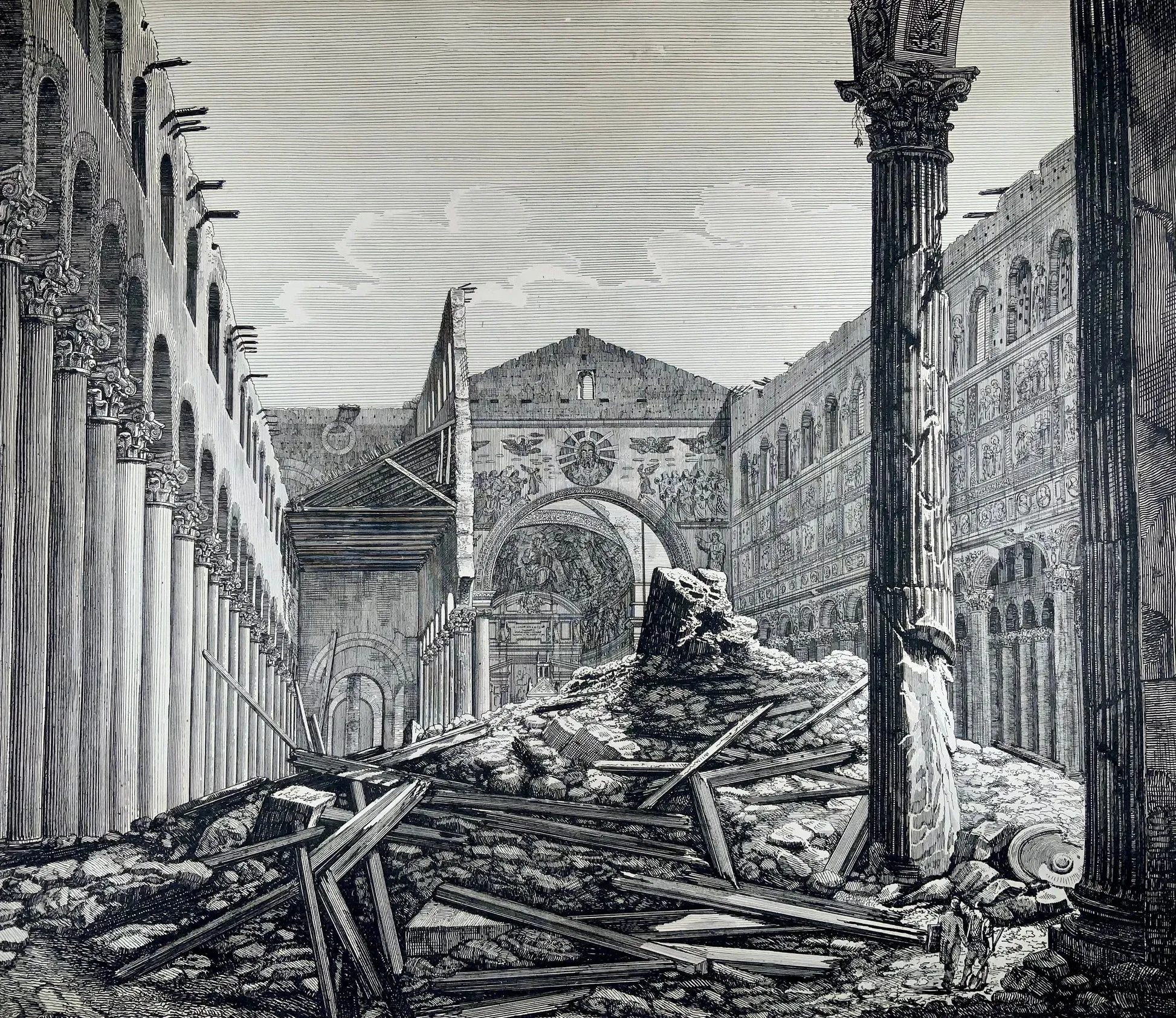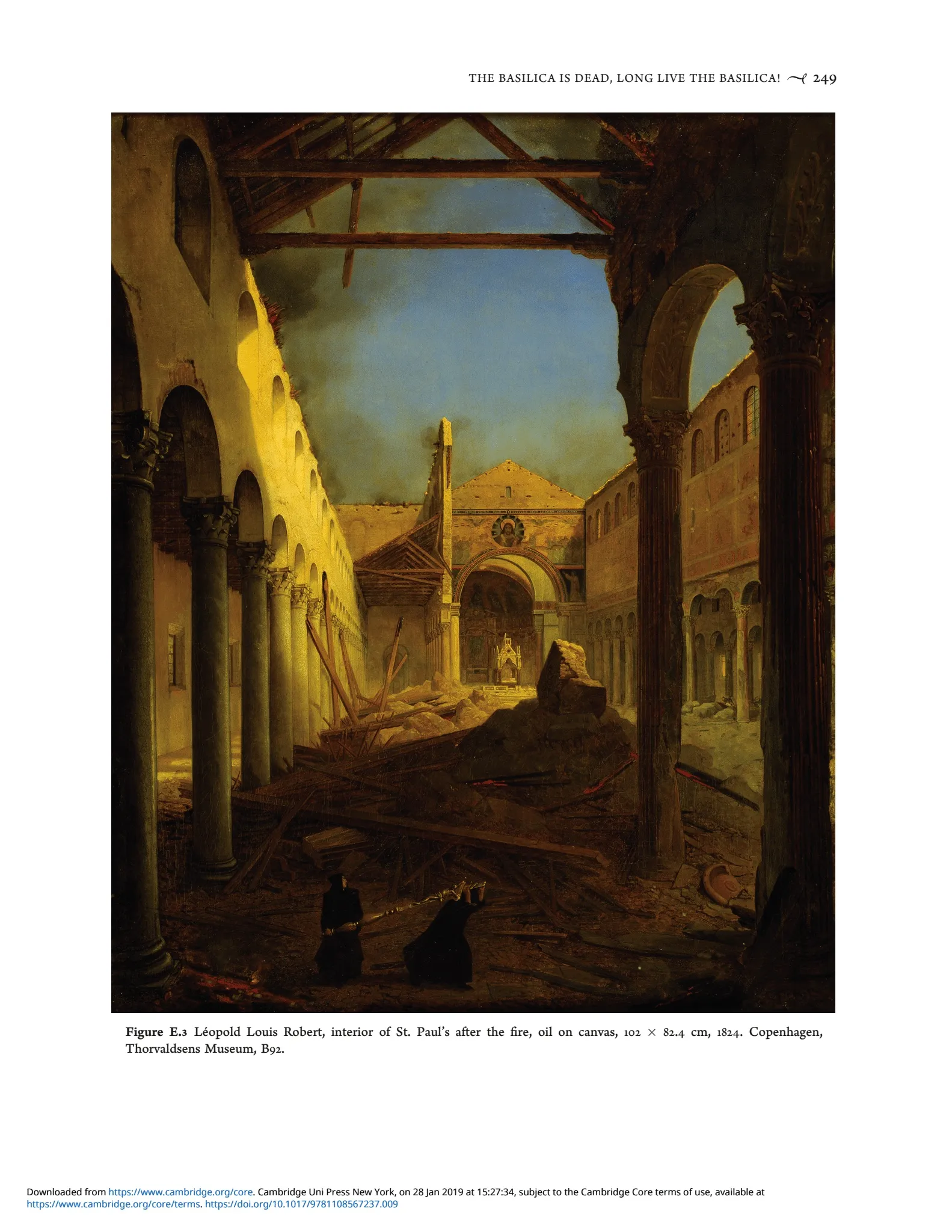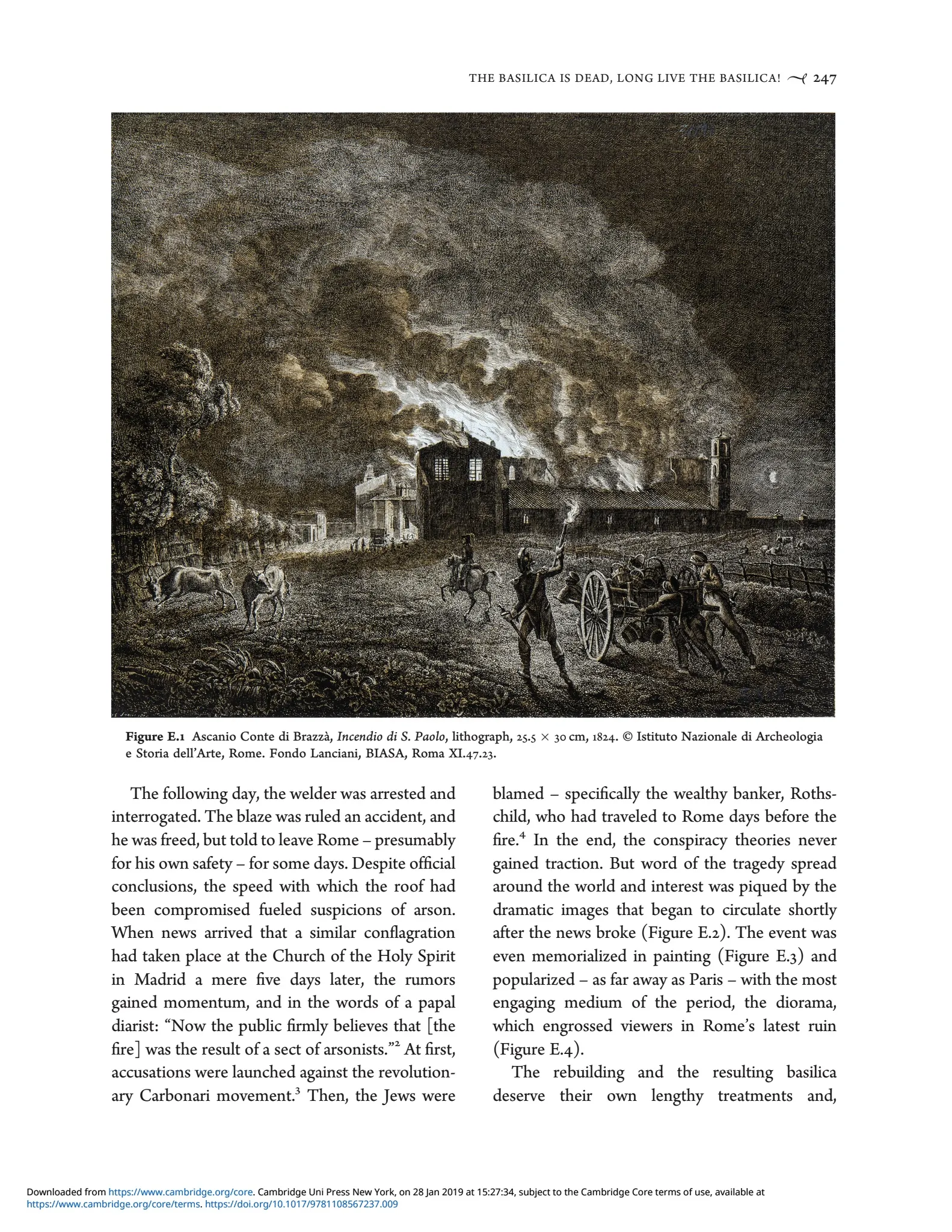
Rome, Italy, Jul 14, 2023 / 03:00 am (CNA).
As the bicentennial anniversary of the devastating fire at St. Paul Outside the Walls in Rome draws near, the profound significance of the July 15, 1823, event is recalled among those who love the basilica. The tragic incident left an indelible mark on the architectural landscape and the hearts of believers.

To commemorate this solemn anniversary, a series of events are planned in collaboration with various embassies, universities, and choirs.
On July 11, the Benedictine friars residing in the monastery at the basilica offered a special vespers service open to the public. Additionally, a community event organized by the nearby university Roma Tre will take place in Rome’s Ostiense neighborhood on July 14 and 15 in the Parco Schuster, a small neighborhood park in the shadow of the iconic basilica. The gathering aims to honor the memory of the great fire and pay tribute to the enduring spirit of the basilica. It provides an opportunity for Catholics, architectural enthusiasts, and community members to come together and reflect on the profound impact of the fire and the subsequent reconstruction efforts, complete with 3D imaging technology developed to show what the basilica used to look like.
Cardinal James Michael Harvey, the appointed archpriest of St. Paul Outside the Walls, expressed the importance of commemorating the tragic event, stating: “We want the future to know that the memory of this event was taken seriously during its 200-year anniversary.”
Harvey also noted that the basilica is organizing an assembly of 19th-century scholars, experts, and historians to visit the basilica and discuss the significance of the tragedy sometime in November. The announcement of this event is still pending.
To gain deeper insights into the fire and its aftermath, Nicola Camerlenghi, assistant professor of Art History at Dartmouth College and a renowned expert in architectural history, shared his expertise during an interview with CNA. According to Camerlenghi, “The fire at St. Paul’s Basilica was a great tragedy. What was lost was the last imperial basilica built in Rome and one of the few monumental buildings from early Christian times that had survived relatively untouched by subsequent alterations.”

Reflecting on the decisions made during the meticulous reconstruction process, Camerlenghi emphasized the faithful restoration of the basilica. The architects and artisans recreated its original state while adapting to the loss of certain materials and using materials that are more fireproof. As a result of Camerlenghi’s research, 19th-century French writer Stendhal’s journal entry from his time in Rome surfaced, providing a glimpse into Rome after the fire. Stendhal wrote: “I found in it a severe beauty and an impression of calamity such as only the music of Mozart can suggest. The terrible painful traces of the misfortune were still alive… Thus perished the most ancient basilica not only of Rome, but of all Christianity. It had lasted 15 centuries.”
The fire was ruled an accident, caused by a distracted welder named Giacomo who unknowingly left a pan of coals burning on the roof. Despite initial suspicions of arson, conspiracy theories involving revolutionary movements and even the prominent Rothschild family failed to gain traction.

The reconstruction of St. Paul Outside the Walls proved to be a formidable undertaking amid the political and cultural turmoil of Rome at the time. To honor the basilica’s historical significance, Pope Leo XII decided to restore it to its former glory, without the architectural modifications and additions that had accumulated over the centuries.
At the bicentennial anniversary of this devastating fire, one is reminded of the enduring faith and unwavering spirit that define St. Paul Outside the Walls and even St. Paul himself. As Camerlenghi noted: “In turn, the reconstruction that ensued was a testament to the importance of the figure of St. Paul to the Catholic Church and indeed to the Christian community at large. No figure has been quite as ecumenical as Paul, the Apostle of the Gentiles.”
If you value the news and views Catholic World Report provides, please consider donating to support our efforts. Your contribution will help us continue to make CWR available to all readers worldwide for free, without a subscription. Thank you for your generosity!
Click here for more information on donating to CWR. Click here to sign up for our newsletter.





Leave a Reply